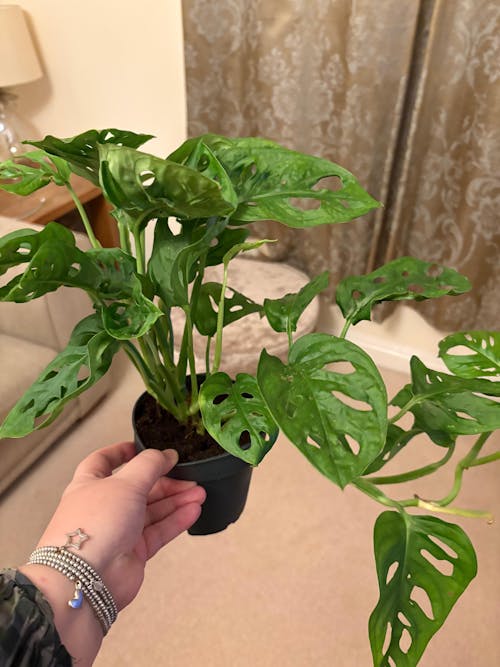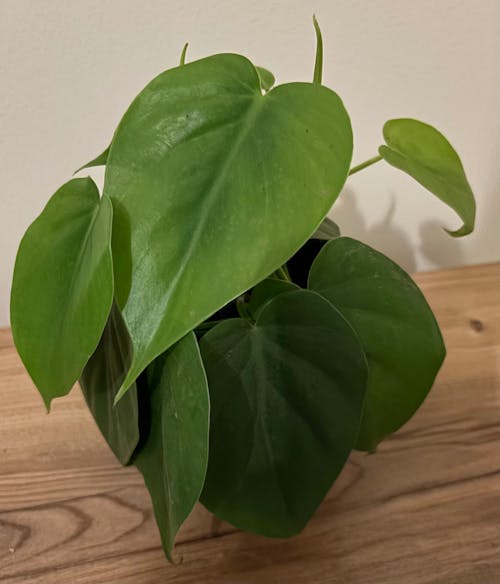Scientific Name
Hoya (Hoy's plant) 'Sunrise'
Common Name
Wax Plant, Porcelain Flower, Hoya Sunrise
Origin
Hoyas originate in Southeast Asia; this variety is a hybrid of two species (H. lacunosa and H. obscura) created in Honolulu
Description
This rare Hoya is a hybrid of two different species and has earned its names through the dazzling display of colours on its foliage. As they mature, their leaves go through the colours of the sunset before settling in a bright green. With some patience, this vining plant can be trained to grow up or left to dangle free to fit your interior aesthetic. Morning sun can help to make the colours of these leaves more vibrant, but take care with warmer afternoon sun, which can scorch your plant. In a bright spot, with care taken not to over-water, this Hoya will reward you with its beautiful, standout foliage and maybe even clusters of fragrant pink and yellow blooms if it's really happy!
Light
Thrives in bright, indirect light, and will benefit from a splash of morning or evening sun. Morning sun will help bring out its colour, while afternoon sun will scorch it so make sure you know when your window gets the light! Give it 1-2 hours of direct sunlight in autumn and winter, throughout its dormant period.
Water
Allow the top third of the soil to dry out between waters, and reduce watering in winter and in dimmer spots. Make sure you don't leave any water sitting in the foliage (or flowers) as this can cause damage.
Humidity
Used to a rainforest environment, this plant likes it humid; introduce a humidity tray if possible, and hose down the leaves regularly to keep them free of dust. If the leaves start to brown and curl, this is a sign that the air is too dry.
Soil
Use an anthurium mix and repot every three years in spring as the plant grows. If it's flowering, keep it pot-bound a little longer to prevent it getting shocked by the move and losing flowers.
Food
Feed every four waters throughout the year. To tailor your feeding even more, look for a Nitrogen-heavy fertiliser when the foliage needs to develop more, and to encourage flowers once it's mature look for one with higher Potassium (K) content, like tomato feed.
Temperature
Ideal temperature is between 15-30°C; make sure it does not get colder than 10°C in winter.
Pet-safe
Hoya are not toxic but can have bad reactions for your pets, including vomiting/ diarrhoea
Sprouts Top Tips
While this plant likes it humid, it does not like soggy soil- make sure not to over-water it. Keep an eye out for yellowing leaves, especially those closer to the soil, to spot this early and reduce the frequency of your waters before the roots are damaged.


























